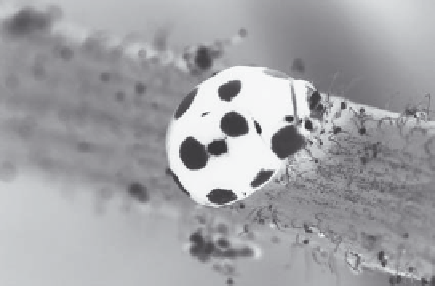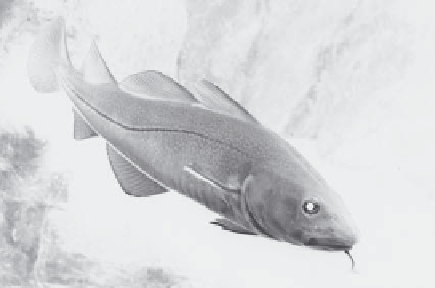Environmental Engineering Reference
In-Depth Information
The last remaining population of the Florida panther (a subspecies of
Puma concolor
) became so
small that genetic variation was remarkably low and deleterious forms of genes occurred at high
frequency, causing features such as undescended testes, kinked tails and the poorest semen quality
of any cat species. Managers decided to translocate individuals from another subspecies, the Texas
cougar, in an attempt to eliminate deleterious variants and restore more normal levels of genetic
variation. Now panthers with some cougar ancestry show dramatic reversals in the frequency of
undesirable features and the signs are good that the probability of extinction has been reduced
(Section 5.5.1).
Pest control on the island of St Helena - a ladybird beetle saves the day
Reproduced with permission of the copyright holder, CAB International.
An invasive scale insect had put at risk the national tree of a small South Atlantic island. Only 2500
St Helena gumwoods were left when, in 1991, the South American scale insect
Orthezia insignis
was found to be mounting an attack on the trees, killing more than 100 of them by 1993 and
expected to wipe them out by 1995. A known predator of the scale insect, the ladybird
Hyperaspis
pantherina
, was cultured and released on the island in 1993 and as its numbers increased the scale
insects quickly declined. Since 1995 no scale insect outbreak has been reported and culturing of
the ladybirds has been discontinued because the population is maintaining itself at low density in
the wild - as good biological control agents should (Section 6.3.1).
Harvest management - counteracting evolution towards small size
© D.P. Wilson/FLPA.
Harvesting is often size-selective, whether for bighorn sheep with the largest horns or for the
biggest fi sh to sell at market. In an unharvested population, a few small individuals may mature
earlier than the rest. If the population is then harvested in a way that takes mainly large individuals,
the few small but mature animals are likely to provide a disproportionate number of offspring to
the next generation and future generations become dominated by smaller animals. A graphic









Search WWH ::

Custom Search